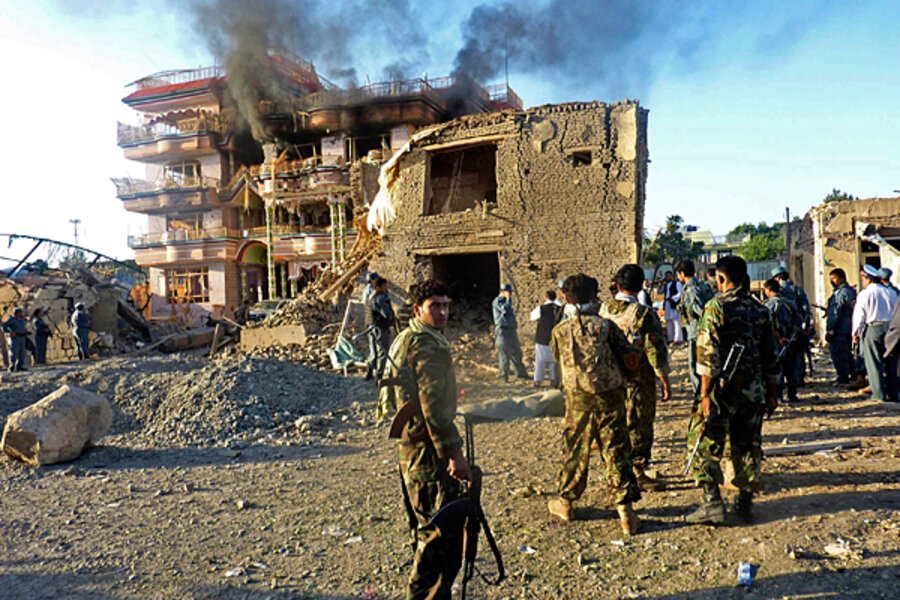Afghanistan war: Taliban attack in north targets civilian organization
Loading...
| Washington
The suicide bombers who blasted their way Friday into the northern Afghanistan compound of a US Agency for International Development (USAID) contractor used a method perfected by insurgents in the Iraq war: blow up a car or truck bomb at a walled compound’s gate, and in the ensuing confusion, send armed fighters streaming inside.
The early-morning attack on the compound of Development Alternatives Inc. in the northern city of Kunduz resulted in a six-hour battle that left three foreign aid workers dead: a Briton, a Filipino, and a German.
One Afghan police officer also died in the attack, while two dozen other Afghan security officers and civilians were reported wounded. The car bomber and five other attackers who entered the compound after the blast also died, according to Afghan officials.
IN PICTURES: Winning hearts and minds in Afghanistan
The Taliban claimed the attack, part of an upswing in offensives against both military and civilian footprints of the Western presence in Afghanistan. The attacks appear to be part of the Taliban’s response to the uptick in US and other Western activities – both military and civilian in nature – since President Obama announced his new counterinsurgency strategy in the Afghanistan war last fall.
Indeed, Friday’s attack on the compound of a civilian, nongovernmental organization was another example of the fading distinction for insurgent groups between military and civilian targets, as the military has taken on more humanitarian duties.
“This attack highlights one of the inherent problems with a counterinsurgency strategy, which is the blurring of the lines between the civilian and military aspects of the war,” says Malou Innocent, a foreign-policy analyst at the Cato Institute in Washington who focuses on the Afghanistan and Pakistan. “When you have the military digging wells and performing other civilian humanitarian tasks, one result is that the NGO community is gradually deemed to be part of the war effort.”
The Washington-based Development Alternatives, which contracts with USAID to work on governance, community development, and agricultural projects in postconflict environments, had opened its Kunduz compound relatively recently.
The United Nations, which operates a number of civilian programs in Afghanistan including elections planning and oversight, was devastated last October by an attack on a Kabul guesthouse that left five UN workers dead. Just this week, insurgents firing on a UN vehicle in Kabul killed a UN employee.
The Taliban have another goal in extending their attacks to civilian operations, Ms. Innocent says: discouraging average Afghans from cooperating or working with foreigners, be they military or civilian.
“They are sending a two-part message with this kind of attack,” she says. “One is, beware if you cooperate with them; they cannot protect you. And two, if you work for them or otherwise associate with them, we will know and you and your family are in danger.”
IN PICTURES: Winning hearts and minds in Afghanistan
Related:





